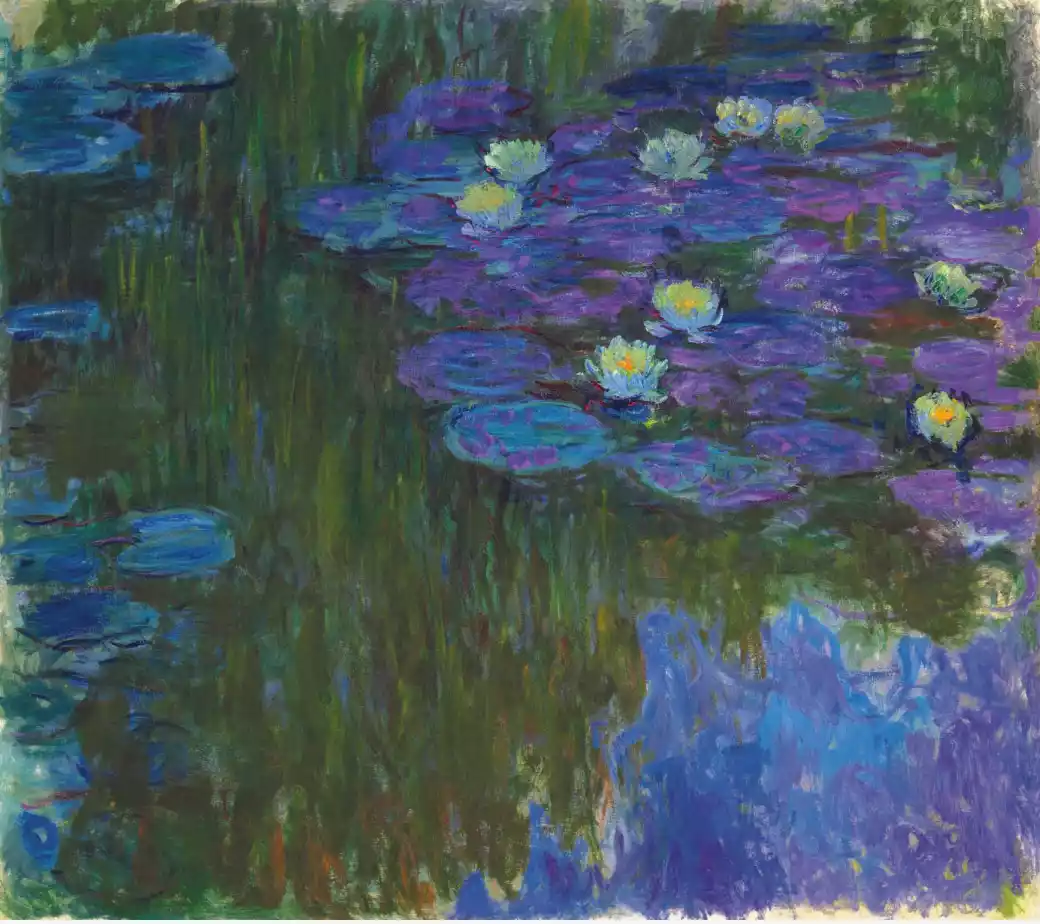FAB Market Insights
Stay informed with our art news and market insights.
At Fine Art Brokers we are often asked if an artwork that someone has purchased or inherited has monetary value. Here we give a rough guide to help you tell if a painting or piece of art is valuable. Many of the comments might appear to dismiss the artistic nature of a work of art, something that has been created from the artist’s skill and imagination. We do not wish to denigrate these aspects in any way, as an artist’s creation is usually a beautiful and wonderful thing – we are simply describing market factors.
There are now various online search engines which allow owners to compare their painting to ones which have sold at auction. Establishing prices for works sold privately is much less easy, but it should be remembered that prices at auction are not the only answer. When you do compare, please take into account the factors I describe below. Your painting might look the same as one that sold at auction or at a fair, but there are many criteria on finding the value of a painting.
Somewhat undefinable factors are visual appeal and importance. Beauty is in the eye of the beholder, to be sure, and defining importance is highly subjective, but an experienced and expert eye is extremely helpful in assessing value.
Value Indicators
So simply on practical terms for those who are not experts, there are a number of ways to establish value. Firstly, the most important factor in value is the artist, just as location determines the value of property; a one story building in a great location has more value than a large house in a less desirable neighborhood. Equally a signed and authenticated drawing on paper by Picasso is infinitely more valuable than an oil painting by an unknown artist.
It is important to know the medium. For example, do you have an oil painting or acrylic painting on canvas, or a drawing on paper, or a gouache or watercolor on paper, or is it a print? And if it appears to be a painting on canvas, make sure it is not a giclee, which is a print on canvas which usually has a very low value because it is a reproduction of an original painting.
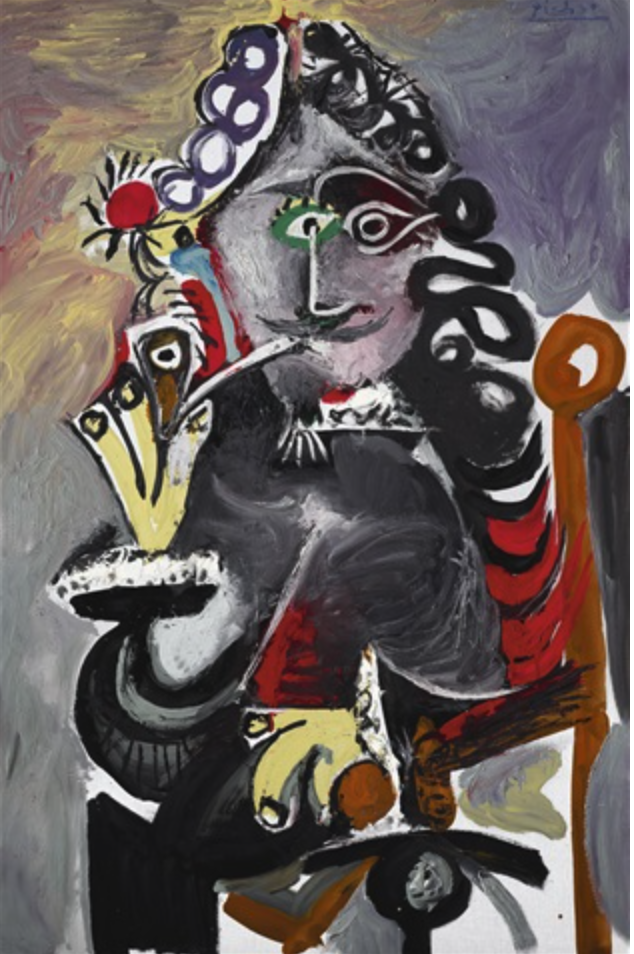
Pablo Picasso, Mousquetaire a la Pipe, 1968.
The Picasso oil, 1968, made $20.7m at auction and is the second highest price at auction for a painting by the artist of a Musketeer. The work on paper, 1967, is the highest price at auction of the subject and it made $1.8m.
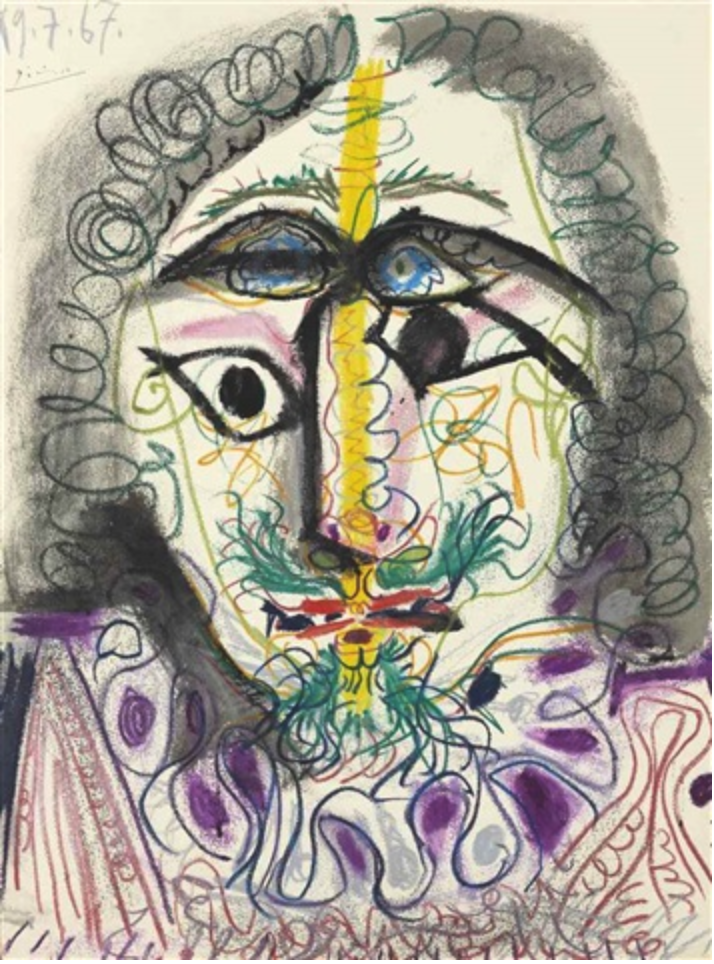
Pablo Picasso, Mousquetaire, buste, 1967.
Medium
In general terms, and obviously there are exceptions, the most valuable two-dimensional works are original paintings on canvas (or less commonly on panel). Then in order of value are pastels on canvas, followed by gouache or watercolor on paper, then pencil or charcoal drawings, and finally prints.
For sculptures, works in bronze and marble are generally the most valuable. Unique clay or terracotta pieces can fetch high prices, but their fragility can be a negative factor. Bronze works are most often limited editions, so there should be an edition number near the base. A smaller edition is better for value – so an edition of 3 or 5 is good news. Unless created recently by a sophisticated carving machine, marble sculptures are unique.
Subject Matter
The question of what subject is more valuable is a very complicated issue, but in general subjects which are typical of the artist have the most value. While demanding subjects are important in many ways, a pleasing subject is more valuable because it is more saleable and has a wider audience than one which depicts an ugly subject or one with a strong political, sexual, or religious meaning for example. Such criteria are not so relevant to works of historical importance which might be in museums, as art historians rightly look at the importance of challenging subjects with layers of meaning - rather than just a pretty girl sitting in a meadow with a parasol – as having more lasting importance, but often the art market favors simple pleasing subjects.
Size plays a factor in value, as a painting which is too large for most collectors has limited salability, just as a very small painting doesn’t command the same price as one that hangs over the mantle. And in simple commercial terms, horizontal paintings tend to have more value than vertical ones of the same size, as they are simply easier to hang over a piece of furniture.
Importance of Date
The date a work of art is created is also crucial in two main ways. Firstly, art which has a high value is usually created soon after the conception of the style in which it is painted. For example, the most sought-after Impressionist works are painted during the main Impressionist era, while a similar looking painting in the same style by a 20th century artist reworking the style has much less value.
Secondly, the most valuable artwork for particular artists are those created during or soon after the artist’s main creative period. (Picasso is an exception to this, as he uniquely had many changes of style through an endlessly creative career). For example, the works by Andy Warhol from 1963 are hugely more expensive to acquire than works by him which look very similar but are executed in the 70s. Here are two examples which demonstrate this, and of course the subject of Liz Taylor is a highly important aspect of the price as well.

Andy Warhol, Liz Taylor, 1963.
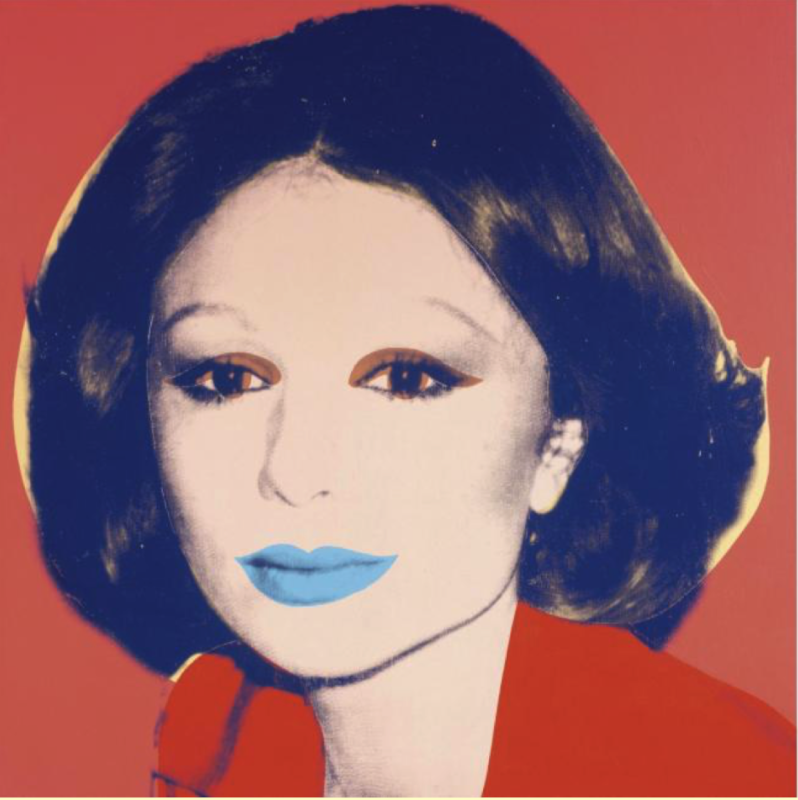
Andy Warhol, Farah Diba Pahlavi, 1977.
The Warhol of Liz Taylor has two important factors in its favor as regards value: the celebrity status of Liz, and the early 1963 date. It made $23m at auction. The painting of Farah Diba Pahlavi is the same size but the subject’s fame is considerably less and it was also painted 14 years later. It made $750,000.
Condition is also very important in the value of an artwork. Ideally, a painting on canvas should be on the original canvas and not relined. A canvas is often relined if there is a tear or the paint is insecure. Any extensive restoration or retouching diminishes value. A work on paper should not have any damage or tears, and repair of a damage is hard to disguise.
I mentioned above when discussing subject matter that typical subjects tend to be the most valuable within an artist’s oeuvre. The same applies to style; a painting should be executed in a style typical for the artist to achieve a high price. Very occasionally a work which is a typical and therefore highly unusual can achieve a premium, but in general collectors search for typical works.
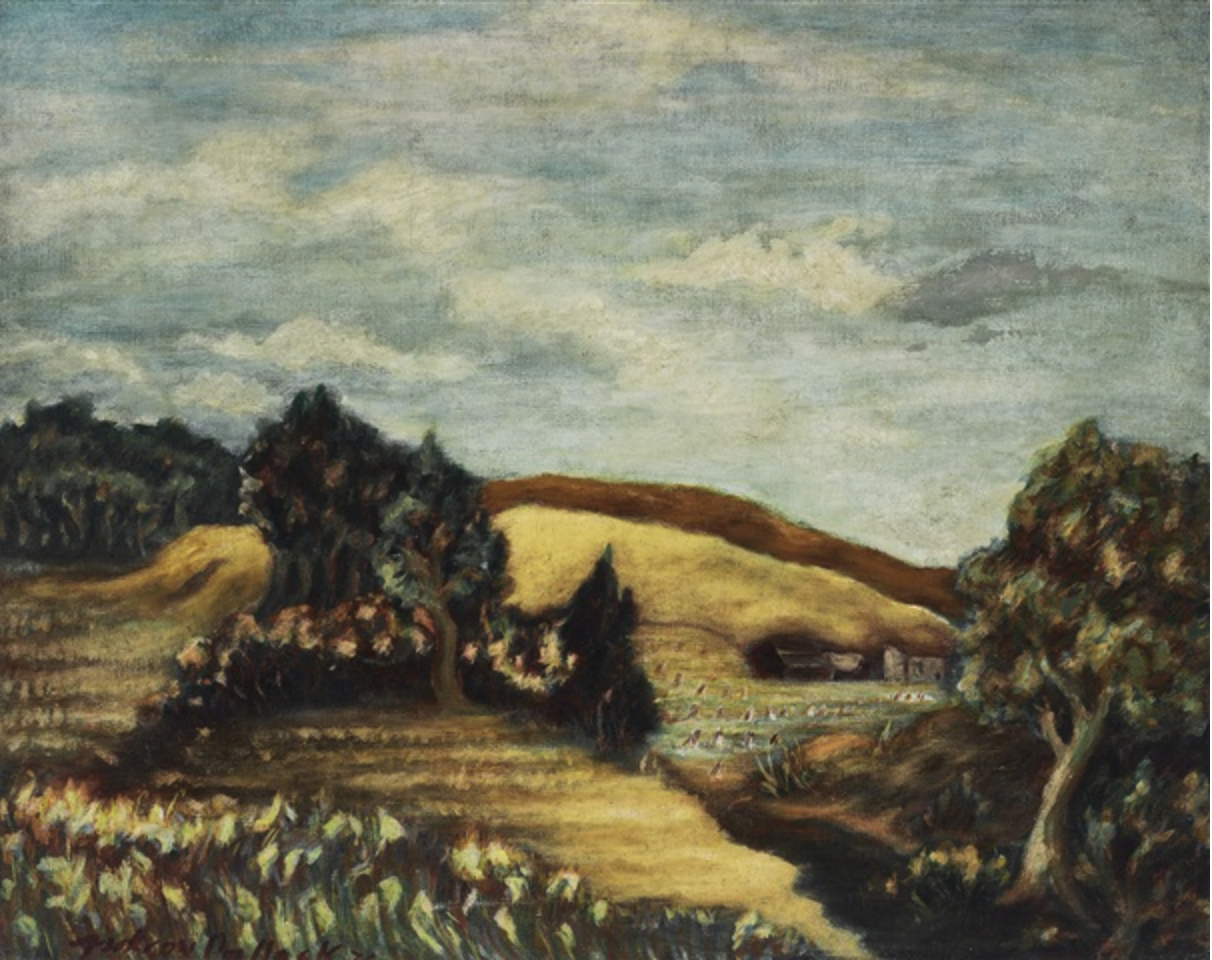
Jackson Pollock, Untitled (Landscape with Tree to Right), 1936.
This is an early work by Jackson Pollock, dated 1936, whose later Abstract paintings have made more than $100m. This was painted when the artist was 24 years old before he painted in an abstract style and it made $275,000 at a 2021 auction. Without Pollock’s name, and if by an unknown artist, it would be worth less than $20,000.
Provenance
Finally, the question of provenance and freshness to the market needs to be discussed. If a work of art has been in an important collection, there is a premium added to the value. For example, works from the Rockefeller collection which sold in 2018 at Christies achieved prices which were about 20% to 30% higher than what they would have achieved if they came from an anonymous collection. Also, works which have not been offered on the market for some time are more desirable, as they have a rarity value. The market craves works which have been in a collection for many years.
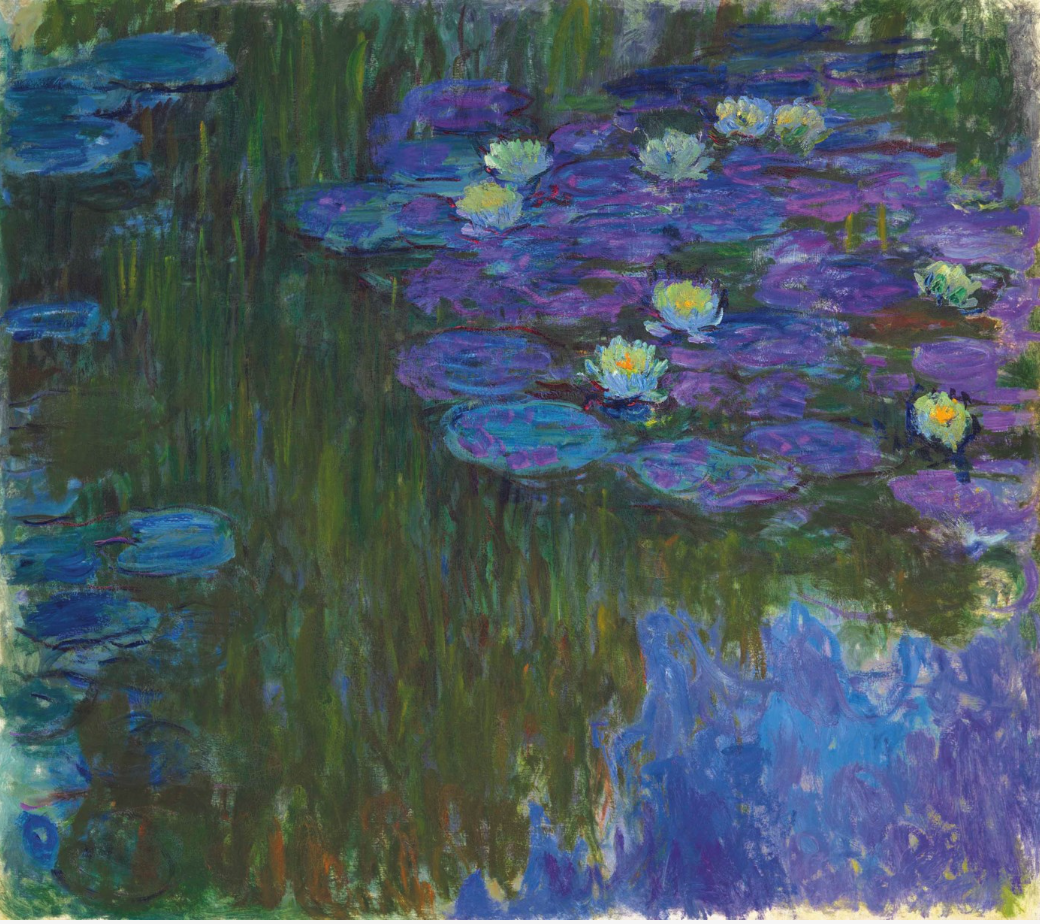
Claude Monet, Nymphéas en fleur, c.1914-17.
This painting of Monet's Waterlilies made $84.6m in the Rockefeller sale at Christies in 2018. It’s probable that the family name added about 30% to the price.
The most useful database for American clients is www.artnet.com as one can search by title, size and medium, but it requires a subscription. www.artprice.com is used by many European collectors, and that also requires a subscription. If you want us to check some works for you and give our expert input, please ask.
To conclude, to get a true sense of value you need to do much more than just compare what your work looks like to one that sold at auction. We have a very good personal experience of this. We helped a client sell at auction a beautiful Renoir still life executed in an excellent date in his career. There was a problem however, as there was an added strip of canvas about 6 inches wide which continued the composition on the left and wasn’t visible to the naked eye. The experts couldn’t tell if Renoir or another artist had added this. Yet Artnet.com promoted their services by showing how our still life was great value compared to others sold at auction, which on face value it was but it didn’t take the condition issue into account.
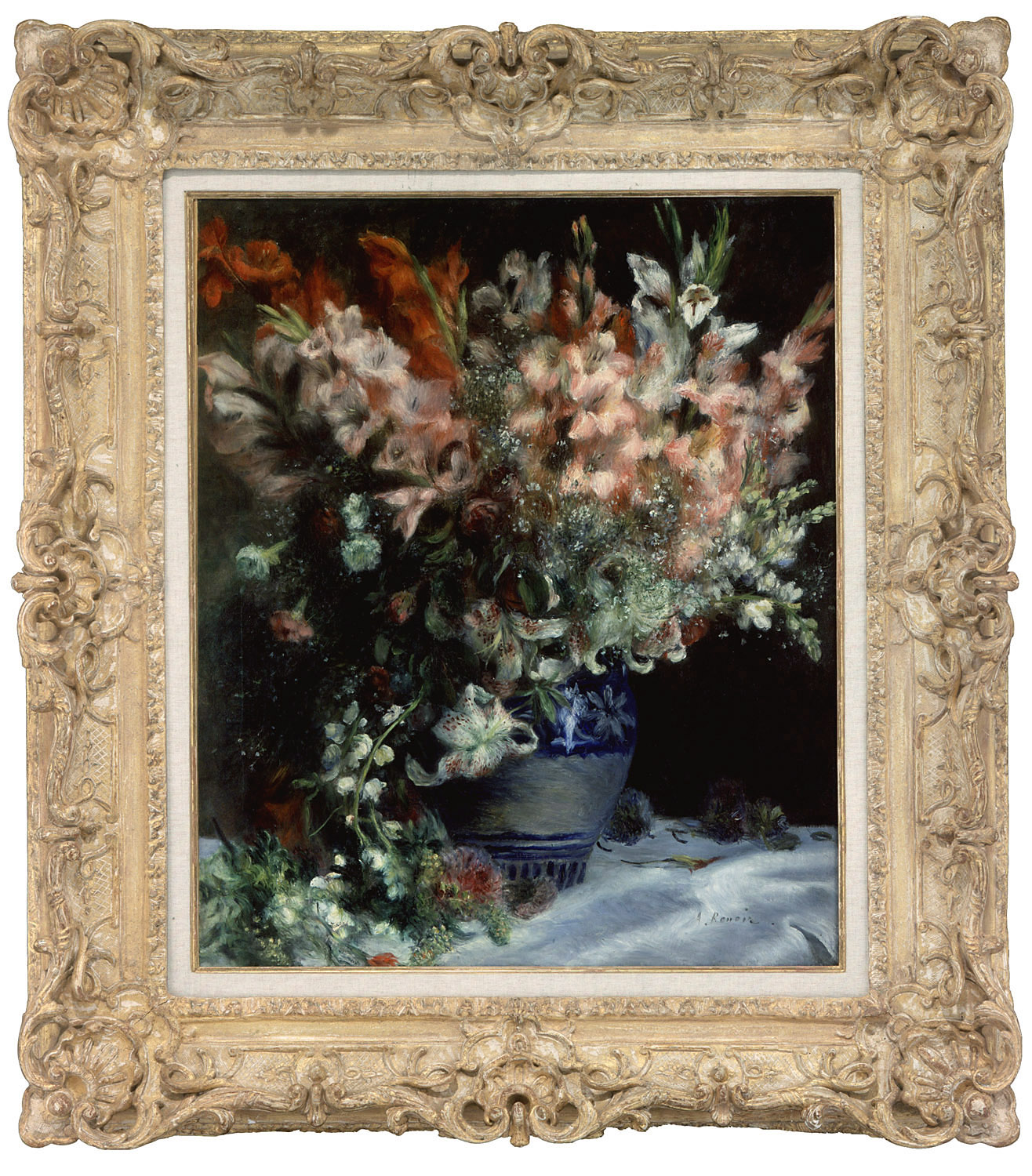
The 4 inches on the left of this painting are painted onto an added strip of canvas, which detracts from the value especially as it is not known if Renoir himself added it and the paint.
When valuing a work of art, you can see that a number of standard criteria have to be factored in. The challenge then is to decide what the real value is and what somebody will pay. Please ask us by calling +1 212 717 9100 or +44 20 7734 7800, or emailing info@fineartbrokers.com.
Ray Waterhouse
New York


